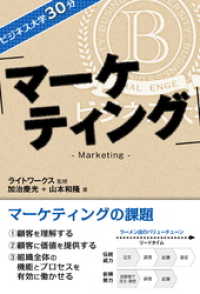Full Description
Create video game elements using the Godot game engine, gaining practical experience in programming and video game development. The Godot game engine uses a simplified programming language called GDScript, which closely resembles Python. By learning GDScript, you can focus more on learning the basics of programming.
You'll explore concepts such as variables and data structures variables used to store information about video game objects that can be manipulated using a keyboard or a mouse. You'll also learn about user interface design, branching statements, and looping statements, enabling you to actively engage in programming and create your own interactive games.
By the end of the book, you'll have a solid understanding of how video game elements work and how the basic principles of programming work as well. By programming simple video game elements in the Godot game engine, you'll learn both programming and the principles of 2D video game design.
What You Will Learn
Understand the basics of programming by creating simple video game elements in the Godot game engine.
Explore variables and data structures to actively store and modify information about video game objects.
Gain a deeper understanding of user interface design.
Master simplified programming languages like GDScript.
Who This Book Is For
Aspiring programmers and game enthusiasts seeking an engaging introduction to programming through video game creation.
Contents
Chapter 1: Why learn programming with the Godot game engine.- Chapter 2: Getting to know Godot.- Chapter 3: Writing scripts.- Chapter 4: Storing data in variables.- Chapter 5: Mathematical operations.- Chapter 6: Branching statements.- Chapter 7: Looping statements.- Chapter 8: Understanding arrays.- Chapter 9: Understanding dictionaries.- Chapter 10: Functions.- Chapter 11: Object-oriented programming.- Chapter 12: Getting input from the user.- Chapter 13: Shooting projectiles.- Chapter 14: Adding projectiles to a player.- Chapter 15: Hitting enemies with projectiles.- Chapter 16: Displaying a user interface.- Chapter 17: Adding physics.- Chapter 18: Playing audio.- Chapter 19: Creating and using scenes.- Chapter 20: Using Signals.- Chapter 21: Creating a Simple Tic-Tac-Toe Game.
-

- 電子書籍
- 蜻蛉 11巻 花とゆめコミックス
-

- 電子書籍
- 屋根裏部屋の公爵夫人【分冊版】 4 B…
-

- 電子書籍
- 週刊ゴルフダイジェスト 2015/12…
-

- 電子書籍
- ビジネス大学30分 マーケティング
-

- 電子書籍
- この胸に深々と突き刺さる矢を抜け 上 …



